Entrance
Earnings season in the U.S is gaining momentum this week, but high inflation, the hawking tone of the Fed and concerns about uncertainty from the war in Ukraine remain in the market sentiment. On Thursday, Fed Chairman Jerome Powell's remarks in his final public address before the May meeting are on the agenda for the week. Jerome Powell will speak at the IMF's spring meeting on Thursday, after which he will take part in a panel discussion on the global economy with European Central Bank President Christine Lagarde and politicians from other central banks. The speeches of many Fed officials will also be followed throughout the week. The economic calendar in the U.S is relatively quiet for this week.
Executive Summary
Last week, ECB asset purchases will be gradually reduced. It did not change its monetary policy. ECB President of C. Lagarde ‘’asset purchase programs in the third quarter it's too early to talk about balance sheet reduction.’’said. On the other hand, there is a downward trend regarding the growth. Outlook highlighted the increased risks. Industrial production in the U.S in March rose 0.9%, beating expectations. The New York Fed manufacturing index is after contraction by %24.6, it rose sharply in April. Jerome Powell will speak at the IMF's spring meeting on Thursday, after which he will take part in a panel discussion on the global economy with European Central Bank President Christine Lagarde and politicians from other central banks. The speeches of many Fed officials will also be followed throughout the week.
At the Fed's May meeting, a 50 bp rate hike is considered certain. On the other hand, the balance sheet reduction process is expected to start in May with the interest rate hike. With all these developments, the dollar index continued to rise and closed the week above the 100.3 level. The Bank of England maintains its dovish view amid concerns over the growth outlook. However, stronger-than-expected inflation in the coming weeks may increase the pressure to act more decisively. While the markets in England will be closed due to Easter today, GBP/USD parity starts the new week at the horizontally negative 1.3020 level. On the British side, the economic calendar is quiet this week.
Overview of Indices
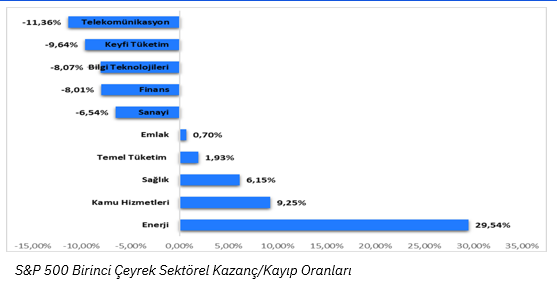
While the S&P 500 fell 5.5% this quarter, economic growth uncertainties made dividend-paying companies more attractive. The S&P 500 High Dividend Index, which tracks 80 high-yielding companies in the S&P 500, gained 6.5% year-on-year as of the close of 29 March.
The outlook for the technology sector is crucial to the future performance of the S&P 500, as it is the technology stocks that give the S&P500 the highest weight. Tech stocks have been rising modestly so far in 2022, amid concerns about rising interest rates and a slowdown in economic growth.
In this quarter, as the effects of Covid-19 left our agenda and were replaced by the Russia-Ukraine war, rising commodity prices and inflation, investors lost their appetite for risk due to rapid tightening and stagflation concerns.
In global markets, money transfers from U.S. stock markets to safe havens such as government bonds and gold were observed. The ounce price of gold tested its peaks of $2,070. The U.S. 2-year bond yield exceeded the 10-year bond yield. While rising bond rates cause costs to rise in almost all areas of the economy, from government borrowing to housing loans, there are concerns that this situation will drag the U.S. economy into recession. On the other hand, investors in the bond market seem to be focusing on how the Fed's balance sheet reduction process will take place.
The first recession forecast for the U.S. economy came from Deutsche Bank. “We see now that the Fed is not aiming for a soft landing,” said bank economists. On the contrary, we foresee a much more aggressive monetary tightening than expected and this will push the economy into recession. The bank's prediction is that the yield on the 10-year U.S. Treasury bond, which is an indicator for borrowing costs, will rise to 3.3% by the summer of 2023, in line with the Fed's 50 basis point increases. The institution estimates a 20% correction in the shares this year.
Overview of Commodities
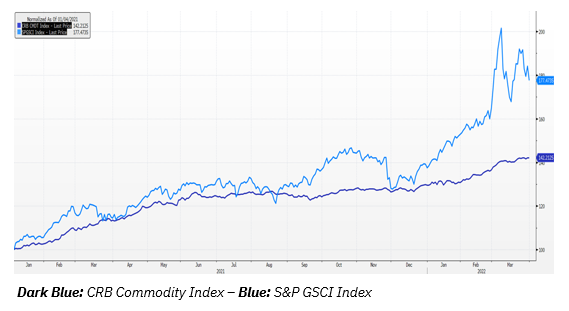
With risk aversion, a trend towards traditional investment instruments is also observed in the market. On a quarterly basis, while we are following the statements from the central banks, which maintain their hawkish stance, we maintain our expectation that the increase in bond yields will continue. In this context, the increase in commodities may continue to increase depending on the current conjuncture and the course of developments between Russia and Ukraine.
Russia's invasion of Ukraine in late February caused a global shock. With the decline in stocks and the subsequent increase in bond yields, harsh effects were observed in the markets.
Commodity prices tested new highs as Russia is a key producer of many important commodities, including oil, gas and wheat. The S&P GSCI Index posted a strong return in the first quarter of 2022 due to the sharp rise in energy and wheat prices after Russia's invasion of Ukraine.
In this quarter, as the effects of Covid-19 left our agenda and were replaced by the Russia-Ukraine war, rising commodity prices and inflation, investors lost their appetite for risk due to rapid tightening and stagflation concerns.
In the current outlook, kerosene remains the best performing component of the index, with strong price increases for natural gas and heating oil amid fears of rising global energy demand and supply constraints as a result of the Ukraine crisis. With the sanctions imposed on Russia, natural gas was the most talked about commodity in the quarter. Since the EU has not yet found a substitute for Russian gas, natural gas may continue to be on the agenda of the markets. Within the agriculture component, wheat, and maize all posted sharp price increases amid fears that supply could be affected by geopolitical risks.
Among industrial metals, the price of nickel rose sharply in the quarter. Aluminum and zinc prices also recorded significant returns in this period. Silver posted flat gains in the quarter as precious metals rebounded from the 2000 peak in gold. In 2022, the demand for precious metals continues to revive due to the increase in bond rates since the beginning of the year and the tendency to avoid risk as a result of increasing inflationary concerns in the markets.
Russia Ukraine War: Sanction Heads Priced in Global Markets
- Russia's invasion of Ukraine in late February caused a global shock. With the decline in stocks and the subsequent increase in bond yields, harsh effects were observed in the markets. Commodity prices tested new highs as Russia is a key producer of many important commodities, including oil, gas and wheat. The S&P GSCI Index posted a strong return in the first quarter of 2022 due to the sharp rise in energy and wheat prices after Russia's invasion of Ukraine.
- In the current outlook, kerosene remains the best performing component of the index, with strong price increases for natural gas and heating oil amid fears of rising global energy demand and supply constraints as a result of the Ukraine crisis. With the sanctions imposed on Russia, natural gas was the most talked about commodity in the quarter. Since the EU has not yet found a substitute for Russian gas, natural gas may continue to be on the agenda of the markets. Within the agriculture component, wheat, and maize all posted sharp price increases amid fears that supply could be affected by geopolitical risks.
- Among industrial metals, the price of nickel rose sharply in the quarter. Aluminum and zinc prices also recorded significant returns in this period. Silver posted flat gains in the quarter as precious metals rebounded from the 2000 peak in gold.
- Russia's invasion of Ukraine in late February caused a global shock. With the decline in stocks and the subsequent increase in bond yields, harsh effects were observed in the markets. Commodity prices tested new highs as Russia is a key producer of many important commodities, including oil, gas and wheat. The S&P GSCI Index posted a strong return in the first quarter of 2022 due to the sharp rise in energy and wheat prices after Russia's invasion of Ukraine.
- In the current outlook, kerosene remains the best performing component of the index, with strong price increases for natural gas and heating oil amid fears of rising global energy demand and supply constraints as a result of the Ukraine crisis. With the sanctions imposed on Russia, natural gas was the most talked about commodity in the quarter. Since the EU has not yet found a substitute for Russian gas, natural gas may continue to be on the agenda of the markets. Within the agriculture component, wheat, and maize all posted sharp price increases amid fears that supply could be affected by geopolitical risks.
- Among industrial metals, the price of nickel rose sharply in the quarter. Aluminum and zinc prices also recorded significant returns in this period. Silver posted flat gains in the quarter as precious metals rebounded from the 2000 peak in gold.
Central Bank Decisions
While the developments regarding the Russia-Ukraine war continued to be the main risk factor shaping the pricing, the risk perception in global markets increased after the new sanctions against Russia, which have been expected to be announced by the USA and Western countries for a while.
After the events in Buça, the USA placed two banks of Russia on the sanctions list and banned new investments in the country. Accordingly, all assets of Russia's largest financial institution Sberbank and Alfa Bank, the country's largest private bank, which were previously included in the U.S. sanctions list, were frozen.
The Fed made the expected rate hike. Realizing the first rate hike since 2018, the bank increased interest rates by 25 basis points in line with expectations. According to the decision, there is an 80% probability that the Fed will increase interest rates for 6 more this year. The most important factor in the differences between the text of the 16 March and 26 January meeting was the addition of the phrase positive momentum in terms of job gains and reaching strong employment levels, the emphasis on rising energy prices and inflation, the rise in the general level of prices, and the uncertainty of the impact of the Russia-Ukraine occupation on the U.S. economy.
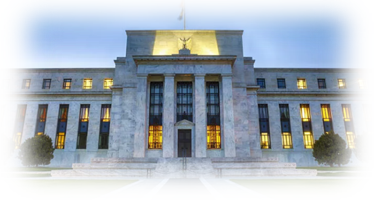
According to the minutes of the Fed's last meeting held on March 15-16, 2022, the expectation that the balance sheet reduction plan would be approved at the May meeting came to the fore. It was stated in the minutes that it would be appropriate to narrow the monthly balance sheet to $95 billion. It was also seen that many officials expressed their opinion that one or more 50 basis points increase could be made.
After the minutes, the expectations in the markets that the bank will increase the interest rate in May and that the balance sheet reduction process will be accompanied by the strengthening, this situation caused the sales in the stock markets to deepen and the dollar index to rise. As the outflows in the bond market accelerate, the U.S. 10-year bond yield continues to test the highest level since March 2019 with 2.75%. Fed's tightening concerns are reflected in the bond market more. While the recession expectations showed itself as a flattening yield curve, the U.S. 2-year bond yield exceeded the 10-year bond yield.
While the U.S. 10-year bond yield fell below the 2-year bond rate, the reversal of the bond yield curve has occurred before every recession in the U.S. economy in the last 70 years. While rising bond rates cause costs to rise in almost all areas of the economy, from government borrowing to housing loans, there are concerns that this situation will drag the U.S. economy into recession. On the other hand, investors in the bond market seem to be focusing on how the Fed's balance sheet reduction process will take place. Making evaluations on the subject, Kansas City Fed President George stated that the bank should focus on the risk of bond yield reversal, as well as downsizing the balance sheet, while Brainard announced that the Fed's $9 trillion balance sheet would be reduced rapidly compared to previous periods.
Analysts speculate that $35 billion of the shrinkage could be comprised of mortgage-backed securities and $60 billion of treasury bonds.

The Federal Open Market Committee is expected to approve this plan at its May meeting and start shrinking. On the other hand, due to the uncertainty created by the Russia-Ukraine war, it was revealed in the minutes that many members gave up voting in favor of a 50 basis point increase in March.
Recession Signals on U.S Bond Yield Curve
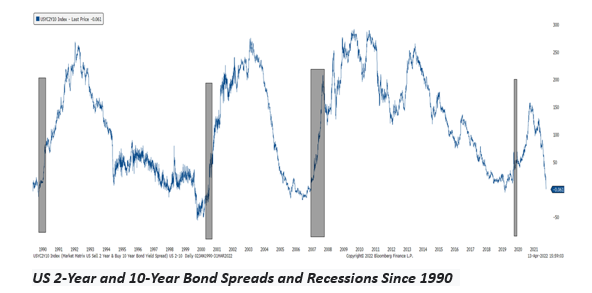
While risks increase in the medium-term in pricing in bond markets, the risk perception is eroded as the anomaly reverses the yield curve in several different maturities for now. The downward trend in the U.S. 10-Year Bond yield, which has been going on since the 1980s, seems to have been broken recently. In this context, how much the bond yields will rise in the upcoming period will be monitored. In the current conjuncture, bond sales are accelerating while signs of inflation are accelerating. For the rest of the year, we expect the upward trend in U.S bond yields to continue in parallel with the tightening policy of the FED.
After the events in Buça, the USA placed two banks of Russia on the sanctions list and banned new investments in the country. Accordingly, all assets of Russia's largest financial institution Sberbank and Alfa Bank, the country's largest private bank, which were previously included in the U.S. sanctions list, were frozen.
Financial markets remained volatile throughout the quarter. Government bond yields rose sharply. While central banks continued their aggressive tightening policies, markets priced in a faster monetary normalization. This course also brought losses in the markets. The extent of yield movements differed between markets. On a quarterly basis, the U.S. 10-year Treasury yield rose from 1.51% to 2.35%, while the upward trend continues. 2-year yield increased from 0.73% to 2.33%. Based on March, the UK 10-year yield rose from 0.97% to 1.61%, and the 2-year yield rose from 0.68% to 1.36%. The German 10-year yield rose from -0.18% to 0.55% and the 2-year yield increased from -0.64% to -0.07%. Concerns over potential tightening and monetary normalization particularly affected Italian 10-year bond yields, which rose from 1.18% to 2.04%. Emerging market bond yields were negative on a quarterly basis. The new issuance market has come under pressure as market volatility is high and companies are wary of issuing convertible bonds at low stock prices.
The yield curve in the U.S. shows a negative trend within the Fed's tightening policy. Short-term interest rates increase at a higher rate than long-term rates. The yield curve is flattening as the gap between the 10-year bond yield and the 2-year bond yield widens. Looking at the past periods, it can be stated that the current outlook was observed in 1989 - 1990, then 2000 - 2001, 2007 and most recently in 2019. In the last 70 years, recession was observed within 16-17 months on average, when the 2-year bond rate exceeded the 10-year bond rate.
Fossil Energy Sector:The Most Talked Sector of 2022!
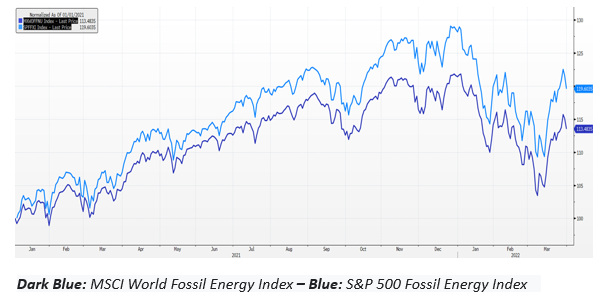
The positive trend continues in the stocks with the general level of rising prices. After the first wave of Covid-19, sectors sensitive to the state of the economy performed well. During the epidemic period, investors turned to Technology and Communication Services shares. Considering the increasing market risks, technology in the indexes; A rotation is observed towards sectors such as energy, finance, industry and materials. While the costs of stopping the activities of fossil energy companies in Russia constitute a risk factor; Exxon Mobil, in its earnings report to be shared on April 29, stated that its profit in the first quarter may be at the highest level seen since 2014.
In the fossil energy markets, the protests in Kazakhstan in the January period and supply-related problems in Libya supported the upward momentum. Subsequently, with the Russia-Ukraine war, which started on February 25, the International Energy Agency raised its outlook for the 2022 oil market. Geopolitical tensions during the March period also caused the oil market to retest pre-pandemic levels. Apart from the sanctions imposed on Russia, although U.S President Biden has implemented new regulations to prevent the rise in oil prices, the uncertainty of geopolitical risks on a quarterly basis continues to support the sector. While OPEC decides to increase production, the next meeting of the OPEC+ group to be held on May 5 is important for the sector.
Increasing number of cases in China, one of the world's largest oil importers, is also putting pressure on oil market demand. On the other hand, considering the last of the sanctions package announced by the European Union to Russia, the coal and defense industry sector may maintain its place on the agenda with sanctions. On a quarterly basis, natural gas was one of the most talked about agenda items, with Europe's dependence on Russian gas. In this context, the rise in the fossil energy sector may continue relatively due to supply concerns as we enter the spring period.
Metals Sector: Sanctions Support The Sector!
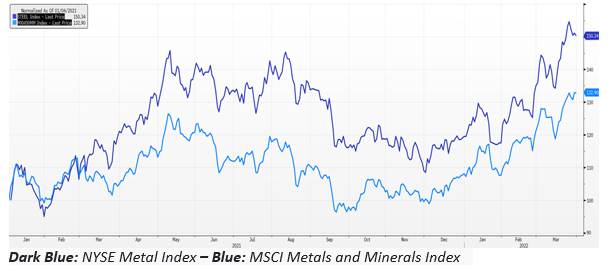
Looking at other precious metals, gold continued to rise in the first quarter of 2022 as it sought a store of value amid concerns over the economic effects of the war in Europe and inflation pressures stemming from the deterioration in the commodity market. Even though 10-year Treasury yields put pressure on the price, the rise may continue with risk aversion. On the aluminum side, according to the report prepared by the International Aluminum Institute (IAI), global aluminum demand is expected to increase by 40% by 2030. Post-pandemic, the transportation, construction, packaging and electricity sectors were the four main sectors to drive demand, accounting for 75% of the total metal required. In this context, increasing demand, similar to the supply-related concerns observed in the fossil energy sector, may continue to support the metals sector.
In the first quarter of 2022, there was another rally in metal prices, driven by geopolitical and market risk aversion. The global metals and mining industry has grown by 120% since the start of 2022, after posting a compound annual growth rate of 84% between 2016 and 2020. The EU agreed on the fourth package of sanctions on Monday (March 14th) after Russia invaded Ukraine. The content of the EU's fourth sanctions package included an import ban on Russian steel and iron. While the current sanctions continued to escalate, steel prices in Europe soared to record highs as the war halted exports from both Ukraine and Russia. The current rise may also support the steel industry in the coming period.
Russia is a major supplier of raw materials such as slab, pig iron and billet that European manufacturers use to produce output products. Looking at China, another major steel producing country, crude steel production in China in the first two months of 2022 decreased by 10% compared to the same period last year due to the increase in coronavirus cases. Global steel and pig iron supply chain disruptions are increasing ferrous scrap demand. A similar pattern was observed in metal palladium, of which Russia is another exporter. Russia produces about 40% of the newly mined palladium used in catalytic converters for gasoline-powered vehicles. Palladium prices are up more than 25% since the start of the year, as Supply concerns may support the rise in palladium prices.
Technology Sector: Long Term Bond Returns Technology Sector Returns
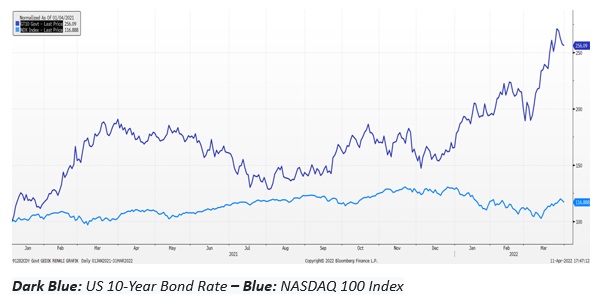
The positive trend continues in the stocks with the general level of rising prices. After the first wave of Covid-19, sectors sensitive to the state of the economy performed well. During the epidemic period, investors turned to Technology and Communication Services shares. Considering the increasing market risks, technology in the indexes; A rotation is observed towards sectors such as energy, finance, industry and materials. While the costs of stopping the activities of fossil energy companies in Russia constitute a risk factor; Exxon Mobil, in its earnings report to be shared on April 29, stated that its profit in the first quarter may be at the highest level seen since 2014.
In the fossil energy markets, the protests in Kazakhstan in the January period and supply-related problems in Libya supported the upward momentum. Subsequently, with the Russia-Ukraine war, which started on February 25, the International Energy Agency raised its outlook for the 2022 oil market. Geopolitical tensions during the March period also caused the oil market to retest pre-pandemic levels. Apart from the sanctions imposed on Russia, although US President Biden has implemented new regulations to prevent the rise in oil prices, the uncertainty of geopolitical risks on a quarterly basis continues to support the sector. While OPEC decides to increase production, the next meeting of the OPEC+ group to be held on May 5 is important for the sector.
Increasing number of cases in China, one of the world's largest oil importers, is also putting pressure on oil market demand. On the other hand, considering the last of the sanctions package announced by the European Union to Russia, the coal and defense industry sector may maintain its place on the agenda with sanctions. On a quarterly basis, natural gas was one of the most talked about agenda items, with Europe's dependence on Russian gas. In this context, the rise in the fossil energy sector may continue relatively due to supply concerns as we enter the spring period.
Defense Sector: ATTENTION TO INVESTORS OF SEEKING PROTECTION AGAINST GEOPOLITICAL RISKS!
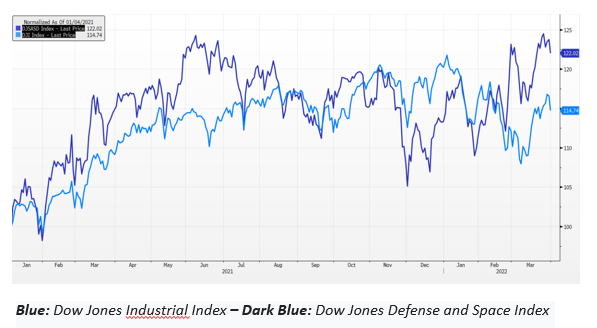
Last month, seven European countries increased their defense budgets. Congress in the USA approved a $778 billion spending bill at the end of last year. As a result, the defense sector will continue to grow and even increase by 2.37% by 2030. It is expected to grow with a CAGR.
Defense sector, with the Russian invasion of Ukraine received a number of investments from various countries, which increased its spending. Countries are increasing defense budgets have already been reduced due to the potential for global conflict. Defense stocks like Raytheon Technologies (RTX), Lockheed Martin (LMT) and Northrop Grumman (NOC) survival the turmoil the S&P 500 year-to-date by leaving behind the benefits of the war and inflation uncertainties.
The U.S. Navy is partnering with Raytheon Technologies for the next five years. $3.16 billion contract to supply radar to 31 ships during the year signed. In addition, the Australian government has strategically partnered with Raytheon. 1 billion by officially announcing Australia and Lockheed Martin Australia Providing $ Independent Guided Weapons and Explosive Ordnance Enterprise took a step forward.
On the other hand, the regions of Russia around Kyiv Following the emergence of evidence of civilian deaths during the occupation, the EU The United States and Britain announced new sanctions against Russia.
Banking Sector: Economic Activity is Slowing!
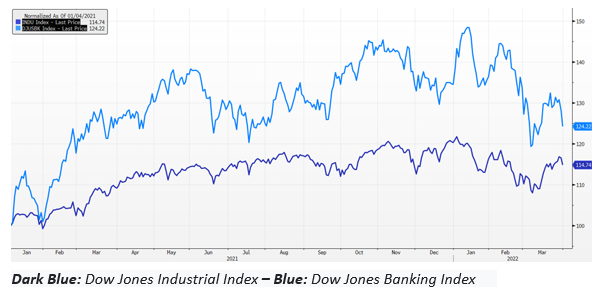
In his latest statement, Fed Chairman Powell stated that he will take the necessary steps to reduce inflation. "If we decide it's appropriate to act aggressively by raising the federal funds rate above 25 basis points, we will do that," Powell said in his speech. "Analysts think earnings in the financial sector have fallen from last year. Investment banks' revenues took a hit after Russia's invasion of Ukraine, while some banks are making provisions for Russia-related losses. Bank executives are worried about the war and an aggressive Fed." Opinions on whether the U.S. economy will continue to grow in the face of economic consequences will be listened to carefully.
The Federal Open Market Committee decided to increase the policy rate for the first time since November 2018, raising the policy rate to 0.25-0.50%. Fed Chairman Powell, in his press statement after the March meeting, stated that Russia's invasion of Ukraine increased food, energy and other commodity prices and inflation pressures.
The Fed's goal in raising benchmark interest rates is to increase credit costs throughout the economy. As interest rates rise, credit costs increase for both companies and consumers. Companies or individuals who cannot or do not want to cover these costs postpone the projects they plan to do with debt.
On the other hand, it encourages those who want to earn higher interest income to save. This reduces the amount of money in circulation. Thus, economic activity slows down and inflation falls. While high interest rates are bad for borrowers, it is a good development for savers. Because commercial banks determine the interest they will give on deposits according to the central bank's benchmark interest. When the central bank raises interest rates, other banks do too.
Aviation Sector: Targeting Pre-Pandemic Levels!
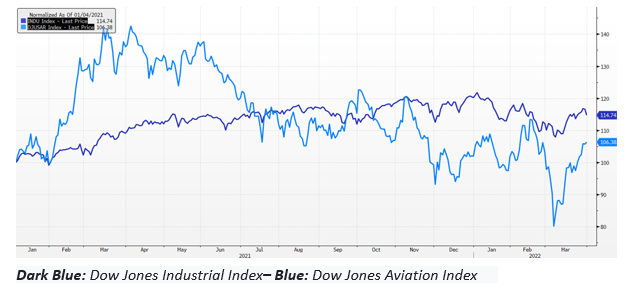
Bank of America pointed to a strong uptick in airline booking data, fueling the positive mood with traffic and guidance updates. Strong demand is still expected in Europe this summer, while analysts say the situation in Russia-Ukraine has had a very limited impact on international bookings.
The Russian invasion of Ukraine caused a huge increase in oil prices. WTI crude rose to $130 on March 8, from a low of less than $92 before the invasion, as conflicts heightened concerns about supply constraints. Airline stocks were particularly hard hit by the oil jump. In addition to oil, the Russia-Ukraine war's impact on metal prices was another factor that increased the maintenance and repair costs of my aircraft.
Beyond the contraction in fuel prices, the overall economic situation looks positive for the airline industry. Recent airline reservation data shows the industry is approaching pre-pandemic levels as domestic leisure travel exceeds 2019 levels.
The airline industry rebounded after the first-quarter guidance update showed strong booking trends in March and confidence in second-half profitability. Aviation stocks have generally seen gains along with inflation, and oil price fears have eased as Americans are expected to spend during the high inflation summer months.
Tourism and Travel Sector: Cruise Sector Stand Out!
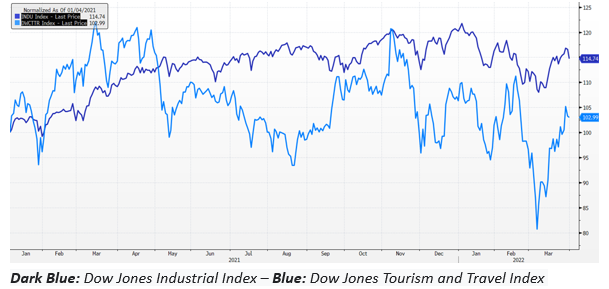
A recent consumer survey conducted by Jefferies pointed to short-term Covid and geopolitical fear among avid cruisers, which is in line with reported declines in recent occupancy trends and could delay the recovery. Analysts said they would consider reverting cruise lines to an Al rating if cruise demand recovers sooner or fuel costs moderate. It has not changed its Hold rating for the industry after analysts warned that the recovery in the cruise ship industry remains volatile.
The travel industry slumped as it rebounded post-pandemic as investors feared that the Ukraine-Russia war was disrupting demand in Europe until a solution was clarified. High energy prices and concerns about summer travel demand in Europe were also the main factors in the selling pressure.
Despite the inflation and interest rate risks in the market, some analysts point to the strength of the U.S. consumer and point out that even higher gas prices will not be as negative a factor in household spending trends as feared.
Travel, entertainment and accommodation stocks could rebound as investors cling to hopes that higher gasoline prices and European war headlines won't cut spring and summer demand too far.
The cruise industry has been severely impacted by travel restrictions and other social distancing measures stemming from the Covid-19 outbreak. The rapidly spreading Omicron variant has also prompted the Centers for Disease Control and Prevention (CDC) to raise the travel alert for cruise ships to the highest level. Some companies canceled cruises in January due to Omicron.
Retail Sector: Stable Growth May Continue!
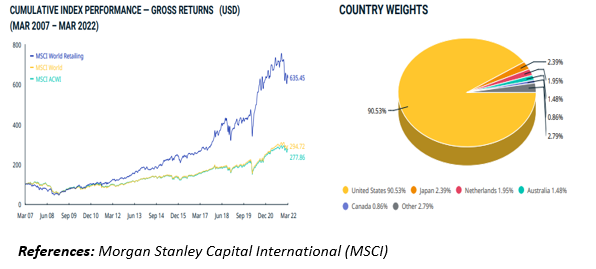
E-commerce, which plays an important role in increasing retail sales, will continue to be an important in the near future. Based on the first quarter of 2022, stable growth continues. Income reports from companies will be followed in the context of the industry.Costco Wholesale became the first retail company to share its fiscal 2022 earnings report after the market close on April 7. The company posted revenue of $50.03B and earnings per share of $3, while analyst expectations were for revenue of $49.67B and earnings per share of $2.97. Costco is up 7.61% since the start of the year
The retail industry is evolving with exponential increases in e-commerce and trends towards omnichannel shopping experiences. Retail sales slowed in February due to rising costs, but the industry is making a steady recovery. According to the National Retail Federation's (NRF) report, sales are expected to reach nearly $5 trillion this year if the industry continues to perform steadily. In this regard, retail companies such as Nordstrom (JWN), Target Corporation (TGT), Casey's General Stores (CASY), Tapestry, Inc. (TPR) and Costco Wholesale (COST) can benefit. When the risks of the sector are evaluated, we can state that the steps of the growth of companies to compensate for the problems in their supply chains and the combination of inflationary pressures on the spending habits of consumers are important. NRF predicts retail sales in the United States will rise from 6% to 8% in 2022, a higher level than the current level of 3.7% growth before the pandemic.
Total retail sales, excluding automobile sales, restaurant and gasoline sales, are estimated to be between $4.86 trillion and $4.95 trillion this year. NRF said overall retail sales in the United States were up 3.8% seasonally adjusted from December and rose 13% year-on-year in January. Retail sales continue to grow after U.S retail sales rose 14% last year and declined in 2020 following the outbreak.
Logistics Sector: Fragility In the Sector May Continue!
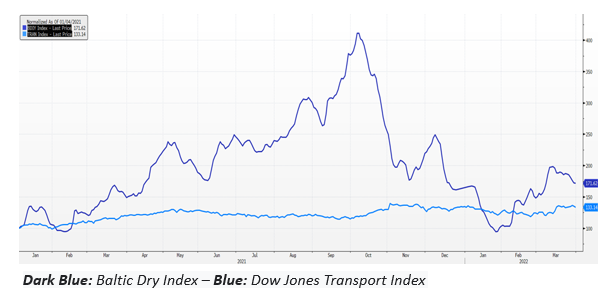
Another problem in terms of sector risks is the ongoing Russia-Ukraine war. The effects of the war continue to be priced in markets and across industries. In the process that started with the pandemic, and continued with the occupation of Ukraine by Russia, the logistics industry is increasingly faced with the problem of congestion and lack of space in warehouses as well as export, supply chain, trade routes. Low prices paid for holding periods may continue to be a major cause of warehouse and warehouse occupancy. Ships departing from Russia cannot enter European ports. In this context, if no change is observed in current developments; The logistics sector may continue to be fragile in the rest of the year in terms of both macroeconomic and geopolitical risks.
The Baltic Dry Index and indicator container ratio, which are important indicators for international product trade activity, continue to trend downwards. The decline in freight indicators raised questions about the pace of economic recovery at the global level. While the expectations for recession in the markets increased, the World Container Index Indicator Container Ratio also decreased by around 10% since the beginning of the year, after the peaks it saw in August and September. In this context, general increases in container logistics and product prices continue to occur. Concerns about China are also considered as the most important reason for the expectations about the global economic slowdown. A weakening in economic performance can be expected, especially in the remaining quarters of the year.
The Covid-19 cases, which have increased again in China, and the disruptions in the ports also cause this. According to logistics service provider Fuyoukache, total freight costs have increased by 5-8% since the end of February due to factors such as the epidemic and rising oil prices, especially in trade-intensive areas such as the Yangtze River Delta. In light of these developments, which have so far brought prices to the top, orders slow down as deliveries continue to be delayed. When these disruptions result in order cancellations, the price of goods directly decreases as the demand for goods prices; then it increases the freight prices as it cannot be transported anyway. Another problem in the recent period is the return of countries to alternative procurement policies due to increasing inflation and difficult global trade conditions.
Ready to start your trading journey? Create your account in minutes and start trading on MetaTrader 4 or 5.
Trade Now